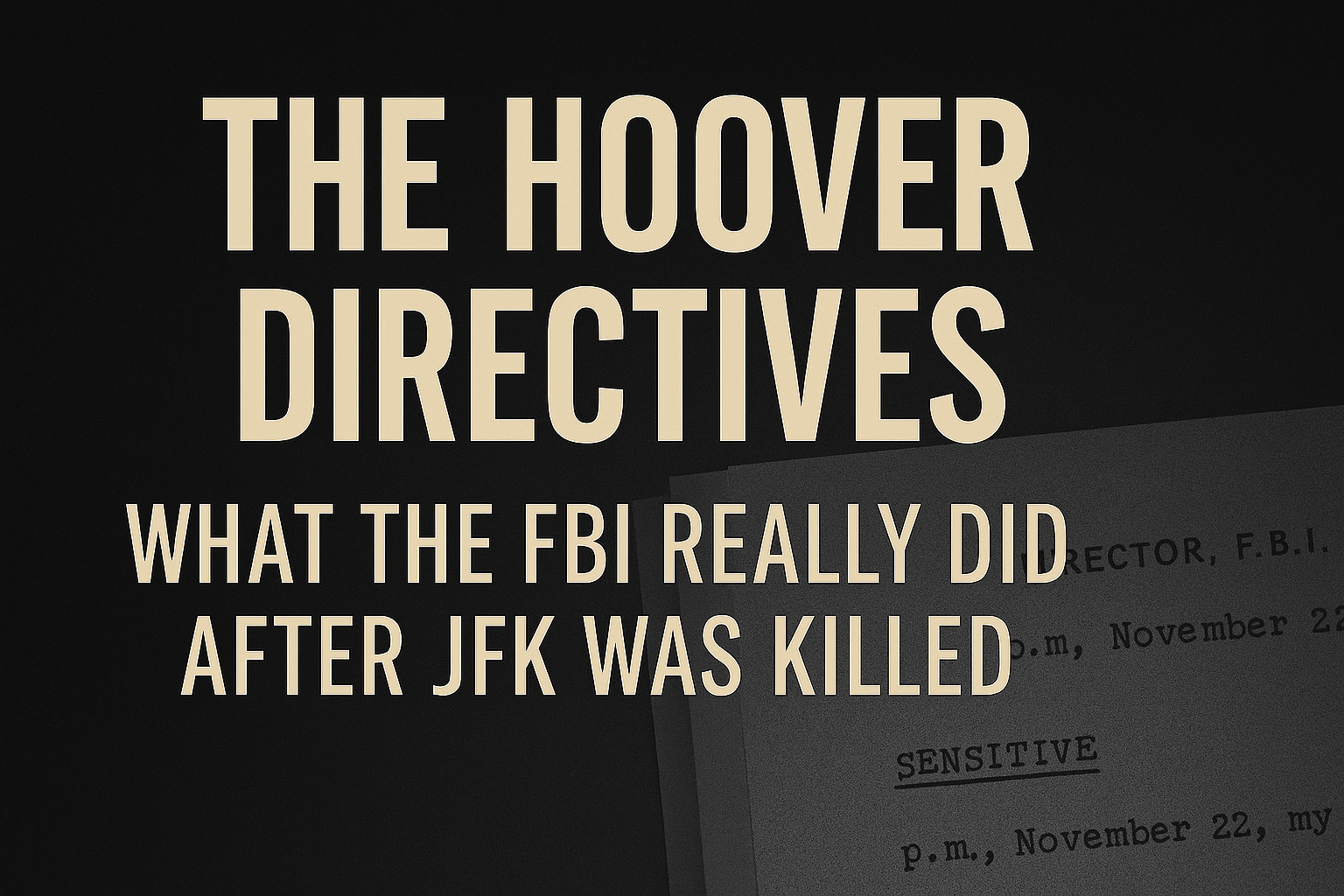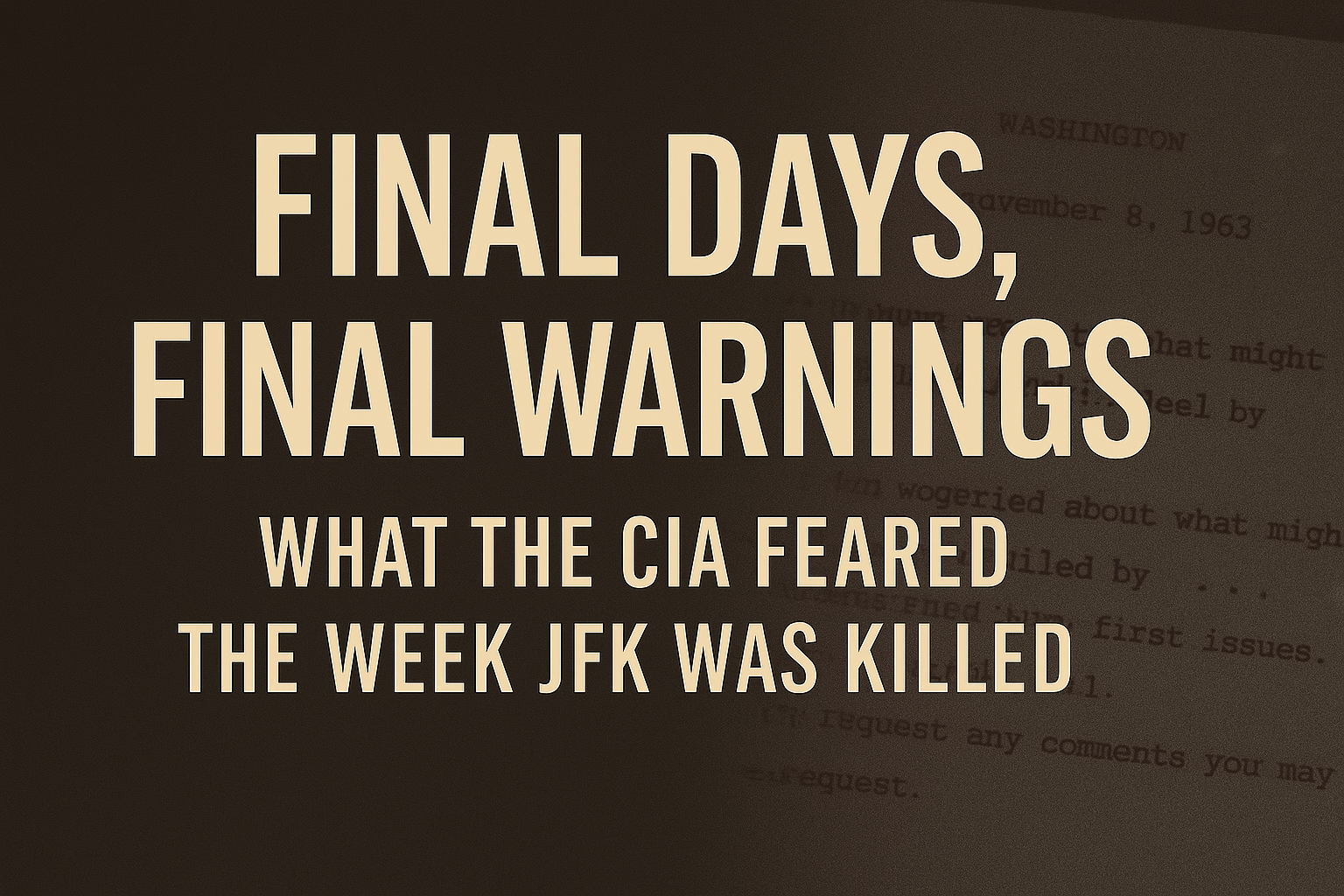The 2025 files expose Hoover’s obsession with control-and why he may have seen the assassination as a threat to his own power.
🚪 A Man Who Moved Fast
J. Edgar Hoover didn’t wait for facts.
By the time JFK’s body was on Air Force One, Hoover had already started shaping the FBI’s response.
The newly declassified files show a man concerned not with solving a crime-but with maintaining institutional dominance.
📁 The First Memo: “This Must Not Be a Conspiracy”
Dated November 22, 1963 – 4:36 p.m., Hoover’s private memo to his top deputies reads:
“Public must not believe this was organized effort. Must emphasize lone actor until facts compel otherwise.”
That tone remained in all following directives.
The word “lone” appears over a dozen times across Hoover’s internal documents within the first 48 hours.
🕵️♂️ A Silent War with the CIA
The 2025 release includes tense FBI-CIA correspondence:
- Hoover was furious the CIA hadn’t disclosed Oswald’s prior embassy visits
- A memo dated Nov. 24: “Agency failed to inform Bureau of Mexico events. Suspect was not unknown to them. Damage control necessary.”
Rather than confront Langley publicly, Hoover made a strategic decision:
“Cooperate with narrative cohesion. Do not allow contradiction to reach public sphere.”
📞 Call Logs and Pressure on Dallas
FBI agents on the ground in Dallas were under orders to:
- Avoid speculation in press
- Coordinate statements with Washington
- Redirect focus to Oswald’s past-not his affiliations
An internal cable flagged one Dallas agent’s early comment suggesting Oswald may not have acted alone. The agent was removed from media access within hours.
🔥 The Autopsy Interference
The files confirm that Hoover personally approved communication with the military pathologists at Bethesda Naval Hospital.
One note:
“Ensure documentation aligns with Bureau findings. Excessive speculation not conducive to public order.”
While not a direct order to falsify, it was clearly a demand for alignment.
🔚 A Crime or a Crisis?
For Hoover, the JFK assassination wasn’t just a national tragedy-it was a threat to the Bureau’s narrative authority.
The 2025 files show he didn’t try to find the whole truth.
He tried to shape what truth was.
In doing so, he may have protected the Bureau-at the cost of the full story.

